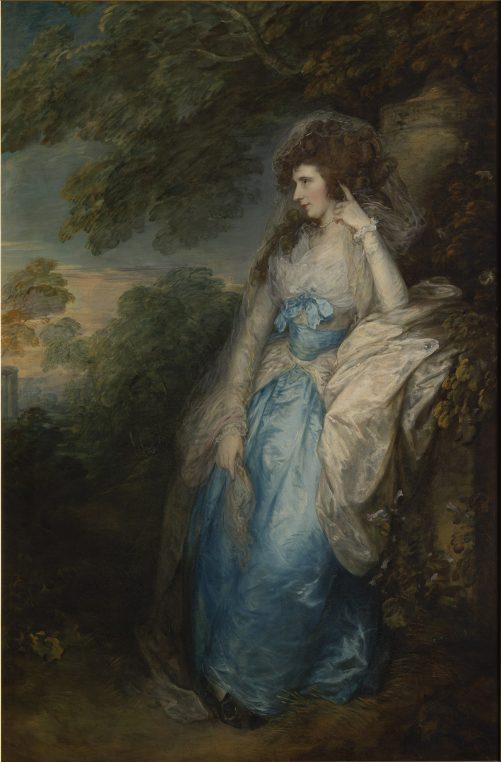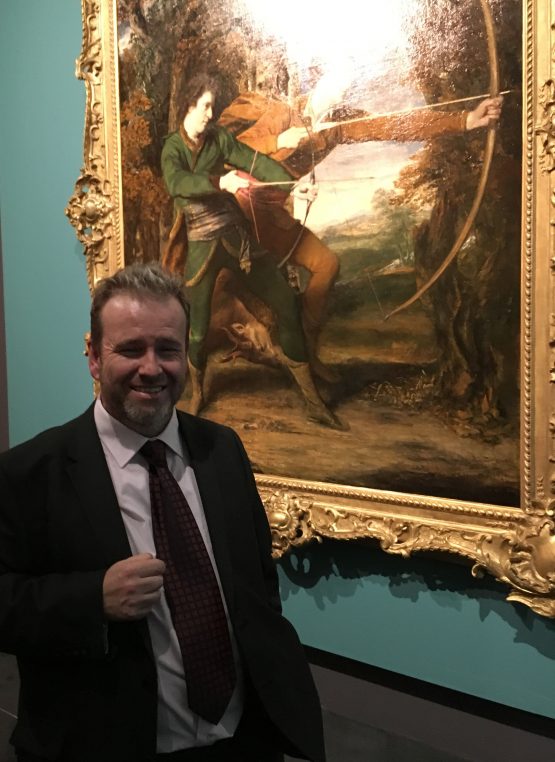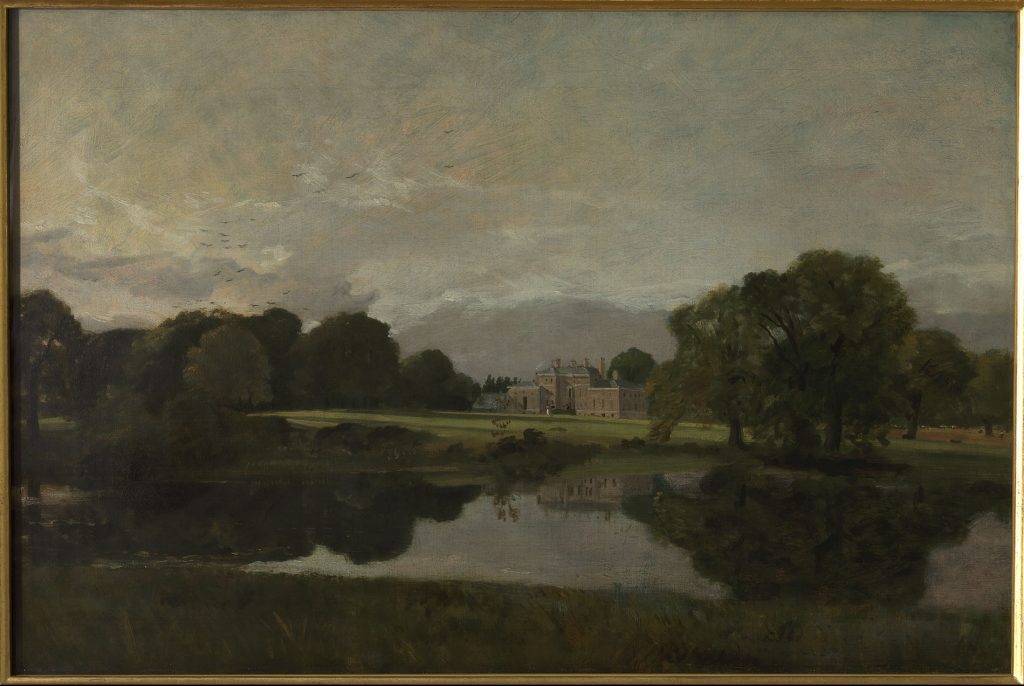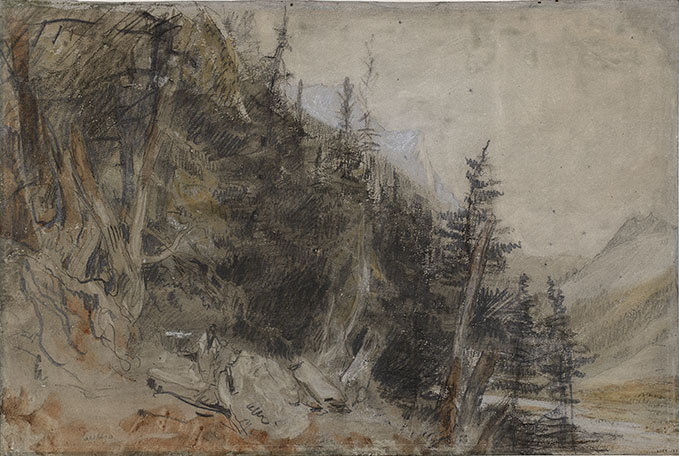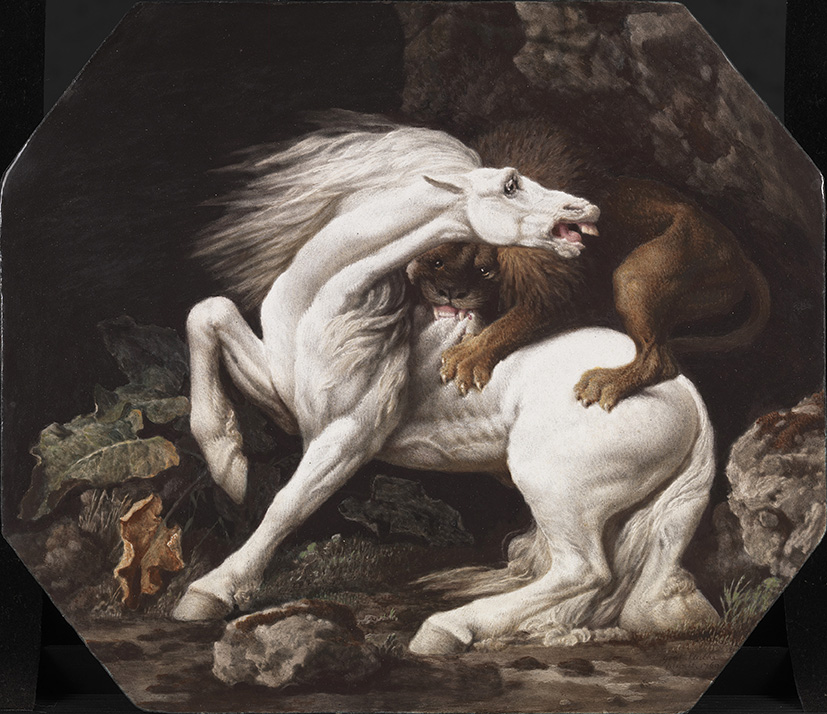
George Stubbs, “Horse Attacked by a Lion”, 1769, enamel on copper, bought with the help of the Society of Friends of the Tate, 1970 © Tate, London, 2019
Of course it would have been much more cheerful to see this exhibition in a beautiful English Country House but the 68 works lent by the Tate Britain for the exhibition “The Golden Age of English painting” are all stunning, with a central chef d’oeuvre, Reynolds’ “Colonel Acland and Lord Sydney: the Archers”. Musée du Luxembourg has good proportions for an intimate show and it is worth spending time on the details of these great portraits.
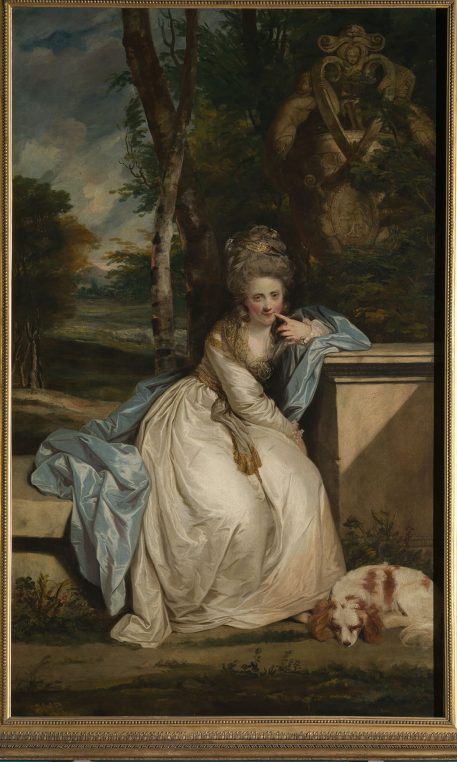
Joshua Reynolds, The Honorable Miss Monckton, 1777-1778,bequeathed by Sir Edward Stern in 1933 © Tate
The first room is stunning with the confrontation of large society portraits by Reynolds facing Gainsborough’s. I could not decide which I liked best in this match between Miss Monckton and Lady Bate-Dudley. Both are wearing blue and white dresses. But I was moved in the next rooms by tiny “Miss Crewe” painted with her brother dressed as Henry VIII, as a pair by Reynolds in 1775. William Beechey‘s portrait of politician Thomas Law Hodges at 18 represents my ideal of a young man.
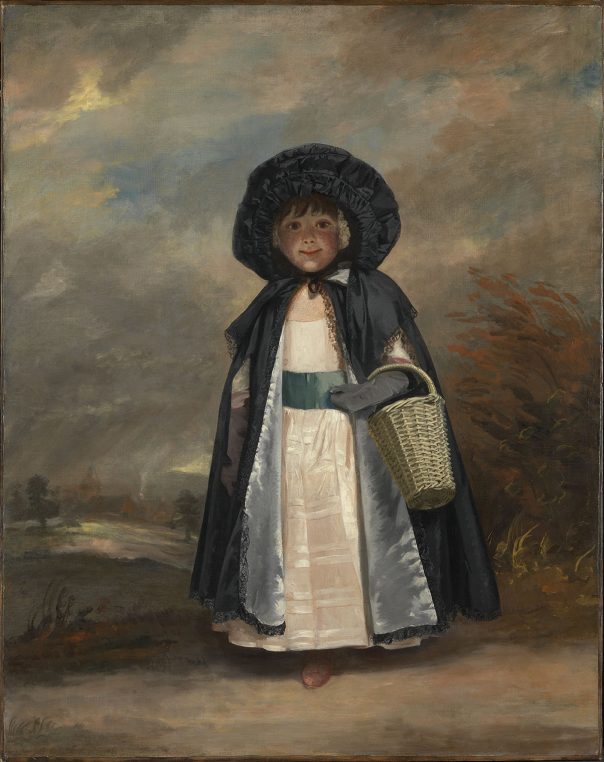
Joshua Reynolds, Miss Crewe, circa 1775, private collection on loan at Tate Britain, since 2009 © Tate
In the next rooms, Nature invites itself and Martin Myrone, Senior curator at the Tate, explained how the painting of “The Archers” (1769) by Joshua Reynolds was a turning point in the show. The landscape is as important as the two young men.
While Reynolds, one of the founders of the Royal Academy of Arts, was prosperous and well introduced in society, Gainsborough was much more solitary. His portrait of his nephew Gainsborough Dupont is a splendor.
A whole section of the show is devoted to the “Borders of the Empire”, with Johan Zoffany’s painting “Colonel Blair and his family with an Indian servant” and William Hodges’ drawings of mogul sites. Later in 1809, Constable ravishes us with Malvern Hall, the epitome of English country house. Turner is discreetly present with drawings and paintings in the last room.
The exhibition is intimate and charming and nostalgically reminds us of British elegance at the time of Brexit. And bringing the Tate gallery to Paris is a major treat for us.
Until February 16, Musée du Luxembourg.
Share this Post
